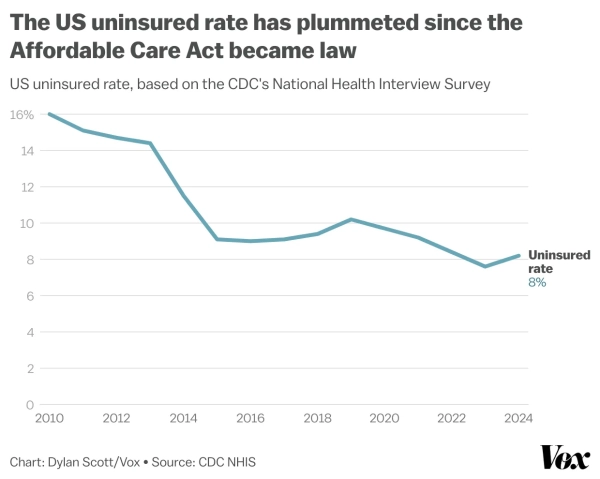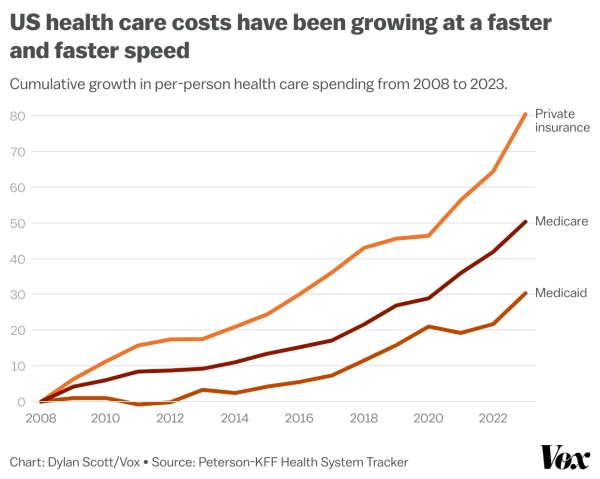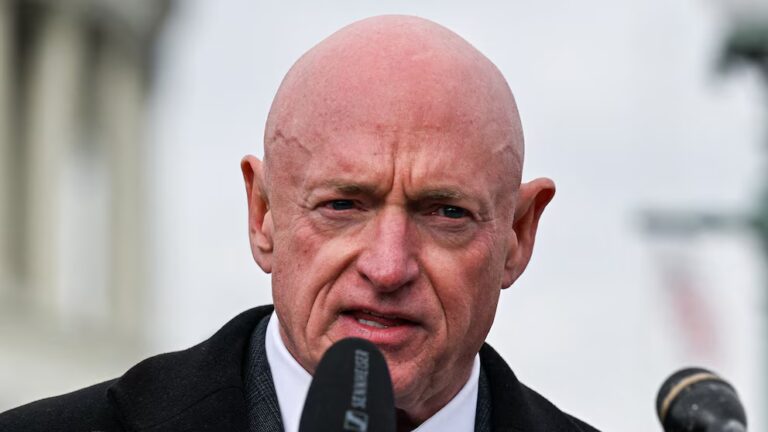
Numerous individuals in the United States are anticipated to encounter a jolt upon enrolling for health coverage this year.
For about half of the American populace obtaining insurance through their place of employment, premiums are projected to increase by another 6 percent on average, reaching around $27,000 annually for families. This signifies a 26 percent surge since 2020. Costs have consistently risen over an extended duration: Current rates are over double what they were in 2010.
Subsequently, approximately 24 million individuals acquiring insurance via the Affordable Care Act marketplaces are confronted with considerably steeper increases, averaging 30 percent for the upcoming year due to Congress’s inability to reach an agreement to maintain lower rates. This constitutes the central point of contention in the present government impasse.
Advocating for and broadening national health funding has proven a favorable cause for the Democrats ever since Republicans unsuccessfully sought to repeal the ACA in 2017. But is the law truly worth championing? Assuming it has been such an achievement, why are expenses still mounting for the overwhelming majority of Americans?
It’s an intricate narrative with a complex resolution.
The ACA was structured to broaden coverage, not to restrain costs
The ACA boasts one evident triumph: The rate of uninsured individuals in America hovers around 8 percent, nearing its historic low, halved from its pre-law enactment level. In excess of 40 million individuals have gained coverage either through the marketplaces or Medicaid augmentation.

Nevertheless, one could be excused for assuming that the ACA’s primary objective was to curtail healthcare expenditures for everyone, considering its moniker as the “Affordable Care” Act. This premise was promoted by Democrats.
“Ultimately, our aim is to render healthcare more budget-friendly for families, enterprises, and the federal government. For those possessing health coverage, the reforms we seek will institute stability and security currently lacking,” remarked President Barack Obama during a 2009 address to Congress as the bill was under deliberation. “For those without it, we shall present superior, economical choices. And we shall definitively prevent insurance providers from discriminating against those who are unwell and most in need of attention.”
However, in actuality, accessible healthcare remains elusive. The majority of the law’s stipulations and appropriations were geared toward “those who don’t” — toward extending coverage to the uninsured. The bulk of ACA funds were allocated for monetary aid to individuals procuring insurance via the marketplaces or for offsetting the cost of broadened Medicaid eligibility for those in or nearing poverty.
For a considerable number of these individuals, the legislation has yielded distinct advantages.
Insurance firms are no longer permitted to deny coverage owing to preexisting conditions, and the national government is intervening to defray a substantial portion of their medical expenses. According to one analysis, Medicaid expansion averted approximately 27,400 deaths between 2010 and 2022. Bankruptcies among Medicaid recipients diminished. Evaluations of the ACA marketplaces similarly reveal that individuals enlisting in these plans, previously uninsured, are presently in a more favorable situation.
However, these gains encompass, at most, roughly 13 percent of the populace. For the remainder, the ACA’s track record is inconsistent.
Indeed, even employer-sponsored plans are now mandated to provide preventive services, including specific forms of contraception, without charge. Indeed, these plans must also now establish an annual ceiling on the amount patients may be required to contribute toward their medical care. Nonetheless, more generalized savings — attending your annual check-up and averting a $30 copay is favorable — do not possess the life-altering impact of obtaining coverage for the first time in years. The novel annual out-of-pocket limits are only invoked in the event of a significant medical emergency; they serve as a valuable protective measure, but not necessarily a factor in rendering routine healthcare more economical.
Nevertheless, the ACA has garnered increasing favor over time as a greater number of individuals have secured access to healthcare. However, it has proven inadequate in rectifying the problem of escalating expenses.
Health care expenses are still growing too rapidly, and we lack a comprehensive strategy to halt it
Democrats voiced their aspiration to diminish the country’s overall healthcare expenditures within the ACA framework, but the law’s provisions to effectively accomplish this were circumscribed. The prevailing legislation empowers the government to administer pilot initiatives potentially lowering healthcare expenses, but while certain endeavors have exhibited promise, they have not been adopted on a scale sufficient to fundamentally overhaul healthcare financing within the United States.
However, the ACA does not constitute a sweeping financing reform measure. It failed to fundamentally alter the mechanisms by which providers establish service prices. Furthermore, the law’s novel insurance mandates to encompass all individuals, irrespective of their health status, and to furnish a more extensive array of benefits, in fact, exerted upward pressure on expenditures. Mandating insurers to cover all individuals is simply more costly.
Over the passage of time, however, some constructive impacts on costs have materialized. Medicare spending has stabilized, and the ACA likely merits considerable recognition for this development, considering its direct payment reductions. Nonetheless, examining other indicators, such as medical price inflation or workers’ contributions toward their premiums, as underscored by New York Times economics correspondent Talmon Joseph Smith on X, it becomes challenging to discern any appreciable effect stemming from the ACA whatsoever.
Obama and congressional Democrats harbored the expectation that the ACA would modulate the cost trajectory over the long haul. A component of the strategy involved those pinpointed payment overhauls. A further component comprised the conviction — still disputed to this day — that furnishing individuals with health coverage would conduce to enhanced long-term health, consequently yielding cost savings over time.
Nevertheless, thus far, the law appears to have merely engendered a minor dent in the cost trajectory.
Healthcare expenditures are augmenting at a decelerated rate, but they are still augmenting: According to a 2020 Health Affairs analysis, national health spending expanded at an annual clip of 6.9 percent from 2000 to 2009, followed by a 4.3 percent clip from 2010, the year of the ACA’s passage, to 2018.

The ACA yielded tangible gains, notably for specific patients, yet it did not resolve the conundrum of unaffordable healthcare. Even individuals possessing health coverage progressively struggle to manage their medical bills as expenses have persisted in their ascent: The prevalence of underinsurance — characterized by having coverage yet lacking the means to afford medical bills — has been steadily amplifying for years.
At present, the US population is aging, and the fiscal strain is poised to intensify as an increasing number of individuals necessitate more acute medical attention.
In light of this, what course of action should we pursue?
America’s health care system is gridlocked
While no nation’s healthcare framework is flawless, ours is singularly deficient: We allocate greater sums than our economic counterparts yet witness inferior outcomes. We are subject to an unfavorable arrangement, and Americans understandably desire a reduction in healthcare expenses.
Related
- Republicans now bear responsibility for America’s dysfunctional healthcare apparatus
- 9 insights Americans should glean from the healthcare systems of the remainder of the world
Consequently, it is reasonable that Republicans and Democrats are embroiled in disputes over subsequent measures, and the underlying rationale for their deadlock: Both factions possess valid viewpoints.
Source: vox.com






